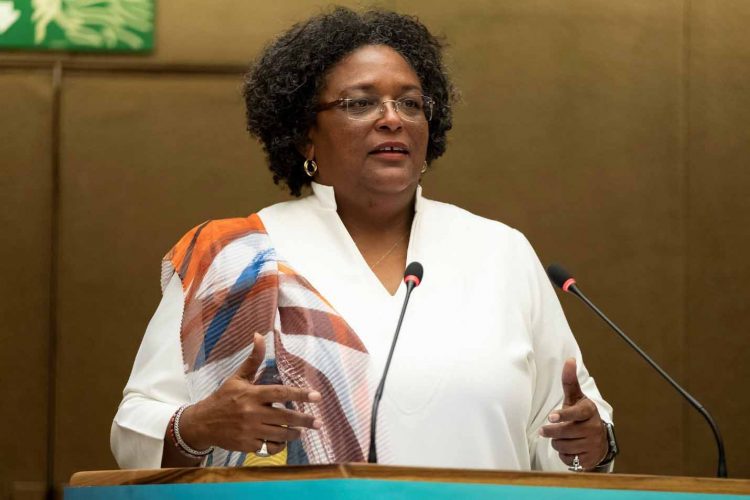A Trinidadian investor has signalled interest in working with the governments of Barbados and Guyana on the proposed food terminal, which it is hoped will enhance food security and promote sustainable agriculture practices, while also boosting economic growth in the region.
This is according to Barbadian Prime Minister Mia Mottley who provided an update on the food terminal, following a question from Stabroek News, during the closing press conference of the 45th Caricom Heads of State meeting.

“We actually have private sector working with us and ironically it is a Trinidadian enterprise so it’s a misnomer to just say Barbados and Guyana because it is Barbados, Guyana, Trinidad in terms of the structure of the investment, the source of the produce and the agro-processing that will take place,” Mottley said.
This newspaper had reported in March that the design for the facility was completed and with the Barbados Department of Planning awaiting approval. It has not moved beyond that stage. Mottley explained that the necessary studies on environmental impact among others will be undertaken soon and forwarded to the Planning Department for consideration.
The project, which has generated considerable interest, is poised to become a critical hub for food production and distribution between the two countries and beyond.
When it comes on stream, the project should provide boosts to both the Barbadian and Guyanese economies, while also contributing to regional food security efforts. The Caribbean region has set a target to slash 25% of its imported food supplies by 2025.
Construction of the food terminal, based on its design, is expected to take between six months to a year.
“The Barbados and Guyana governments will… make sure that it is operated, that it is set up, that we can have the throughput in terms of supplies of agricultural produce, to be able to keep it up… then export to Caricom and make it profitable,” Barbados Minister of Agriculture and Food Security Indar Weir had told Stabroek News in an interview in March.
He explained that the “facility will have a space for the dicing and packing for the distribution of fresh produce…. In addition, it will have the commercial package facility so that the supermarkets… restaurants can buy in commercial quantities, which is really an exciting place to be.
“We are also looking at storage facilities that can give us longer storage so that we can release produce on the market when there are shortages and keep the price down or not allow for prices to skyrocket.
“The purpose of a food terminal is not just for the sake of having a terminal to move food, but it’s also to address issues in terms of avoiding shortages, which really is the main focus of the terminal… Give the consumer a fair chance at getting commodities at a reasonable price and then allowing us to be able to get into exports, utilising the capacity that we have.”
The Barbadian minister had explained that once supplies were constant and the local market satisfied, exporting commodities to Europe, the USA and Latin America would be addressed.
Under the agreement, Guyana will supply the food terminal with fresh produce cultivated in Region Nine and from neighbouring Brazil. This is a necessary means to ensure produce is consistently supplied.
“And that is what is most attractive to investors; the fact that you will have consistency of supply and at the same time you will be able to allow farmers to get into contract and thus making sure they are able to stay in business as well. This is a win-win for all,” Weir added.
Last year, Barbados and Guyana were tagged with the key responsibility for the setting up of a regional food terminal, which is expected to function as a fallback facility to help respond to food security emergencies in the region.
On the sidelines of the 2022 Barbados Agriculture Food Processing Festival, President Irfaan Ali and his delegation visited the location earmarked for the Guyana/Barbados Food Terminal at Lears, St Michael.
The terminal, according to a brief posted on the President’s Facebook page, will be constructed on seven acres of land. It will boast a multi-purpose facility to accommodate about 45 containers, cold storage, and packaging and processing plants.
There will also be a large reservoir for water storage and land set aside for crop production.










